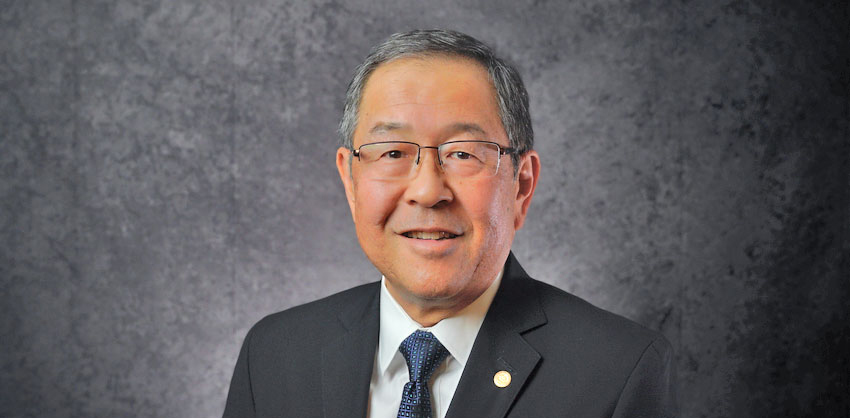Bolstering community dentistry and comprehensive education
By Darby Kendall
Community care lies at the heart of modern dentistry — it’s where technology and compassion meet to shape the future of the field.
According to Ronald Sakaguchi, D.D.S., Ph.D., M.B.A., dean of the OHSU School of Dentistry, we are in the golden age of dentistry thanks to innovations in immediate on-site care, transforming the field for both providers and patients. As part of this evolution in dentistry, Sakaguchi encourages his students to provide critical dental care to underserved populations, where their work makes a tangible difference, and they learn invaluable hands-on skills.
This is an audio story featuring highlights from a conference Sakaguchi spoke at in the spring of 2024.
Transcript
Let me start with a story. Thomas and Anna are third-year dental students. It’s a four-year program in the School of Dentistry. They have a really busy schedule in the clinics, in the classrooms. On Saturday mornings, they wake up early and they go to the homeless shelter near the Portland Union Station. They get there at about 6:30 in the morning. They have to clean up the conference room from the previous evening’s meetings, put away the chairs, put away the tables, and they go to a storage closet, and they start pulling out equipment. And over the next three hours, they set up a four-chair dental clinic, together with other dental students who volunteer their time and other faculty who volunteer their time. They treat a large group of homeless patients that had waited, in some cases overnight, to be seen that day. They provide a variety of services. Yes, they take out a few teeth. They do some fillings, and they do some things as simple as an examination and as a cleaning.
Dr. Ronald Sakaguchi is the dean of the OHSU School of Dentistry. In March 2024 he spoke about student community service and the future of dentistry at OHSU. Here are some highlights from his talk.
Isaac was a patient there that morning. He had waited overnight to be seen. And he said that it was the first time in years, if not decades, that somebody had shown him kindness and cared for him and talked to him about oral health. It was life changing for Isaac. Our dental students, about 25% of our dental students overall volunteer for this clinic. And this is the spirit of our students at OHSU. They’re very generous. They really care about the community. The one question that comes up during orientation, their first day in class, their first question is, “How do I volunteer?” So these are our students at OHSU. Magnificent. And they’re providing this care for this very underserved, very vulnerable community.
It’s really a tremendous time to be a dental student, as well as being a dental patient, because of all the things going on. There’s a lot more emphasis on dental public health. Our students want this. They don’t want to be in small solo practices, like they used to be when I was in dental school. That was kind of a given when I graduated; you would join a small practice as an associate, you would buy the practice, and you continue working with a few staff. That’s changing. This generation of graduates wants to work in groups. They want to continue to learn. They want to integrate. They want more integration between dentistry and medicine. We could be very optimistic that they’re looking at this way of practice and they’re thinking about population health.
I want to say this is a golden age of dentistry, because now we have all this technology that’s going to change the way that we provide care. If you think back to the homeless population, a lot of people don’t have addresses. There’s no way to contact them to remind them please come back to one, two, three, four, five appointments. That’s not likely. But for those of you that remember, I think it was the second episode of Terminator. You had the bad Terminator kind of coming out of this puddle of metal. Literally, this is the way it works in dentistry now, where you have a puddle or a pool a polymer, and you shine lights into it, and based on the image file that was sent to it from the computer, it would grow your crown out of this. It is the most amazing thing. So that technology exists, and the nice thing is that you could put this in a dental office. You don’t have to send things over to a laboratory. You could then fabricate this in a matter of hours. So now your population that has difficulty for access to care, you can actually provide this service that same day. And I think that’s going to transform the way that we deliver care, particularly in rural areas as well, rather than asking the patient come back five, six, seven times and making that long distance travel.
I also want to talk about where we started. So Thomas and Anna, at the end of the day, they’ve seen a lot of patients. They’re exhausted, but they’ve learned a ton. They now have to tear down the clinic, put it all back into the closet again. It’s been a wonderful activity for them and for these patients that received care that day, the care has been transformative.

